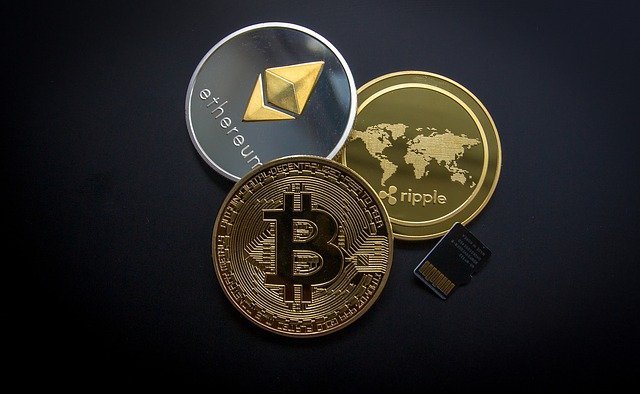By: K. T.Chui, S. K. Singh
Cryptocurrency has become a popular topic in recent years, with Bitcoin at the forefront of this new financial system. But what is cryptocurrency? How does it work? What are some of its benefits? And what does the future hold for cryptocurrencies and metaverse technology?

What are cryptocurrencies?
Cryptocurrencies are digital and decentralized currencies that allow people to buy goods and services and exchange money without the need for a trusted third party like a bank or credit card company. These currencies use cryptography to secure transactions.
How in the future will cryptocurrency spread on the internet?
We can see that what we call “Internet” is not just a network of interconnected computers, but also a vast and complex ecosystem. This ecosystem has its own life and evolution: it is not only the sum of all the devices connected to it, but also reflects the behaviors and interactions of all participants in it. It interacts with our society and changes it.
Why cryptocurrency is important in the near future?
It may sound like a bit of a science-fiction concept, but metaverses are an eventuality. It is simply too large of an opportunity to pass up. Eventually, because of the fast increases in technology and communication, we will reach the singularity before 2050. This would mean that computers or AIs could become so intelligent that they could create sentient beings for themselves.
Cryptocurrency is not just digital money, but also a type of software called a protocol
Cryptocurrency is a type of software called a protocol. Protocols are just one way to give value to data. For example, the internet is a computer network that enables the transfer of data from one computer to another over a public line. The data can be anything from an email or video of a cat playing with yarn to a copy of the latest blockbuster movie. The point is that protocols make it easier for people to exchange valuable information. Bitcoin is the first decentralized cryptocurrency. It was created in 2009.
What are metaverses?
Metaverses are centralized databases that store information about all the distributed databases. They are essentially hubs for connecting between different blockchains. One way of understanding metaverses is by thinking of them as a wormhole that connects two universes. Metaverse aims to connect blockchains through this wormhole. By providing a way to access distributed databases, Metaverse will become the first blockchain-based platform that combines the functionality of both a distributed data exchange protocol and a distributed data exchange marketplace.
Metaverse blockchain is similar to Ethereum’s, in the sense that it is based on the same technology and uses similar code. It runs on a Delegated Proof-of-Stake consensus mechanism, which is also the case with many other blockchains. Delegated Proof-of-Stake is a modified version of Proof-of-Stake, which allows selected people (called block producers) to produce blocks continuously.
Benefits of metaverse technology
A metaverse is a world on the internet where people’s data and tasks may freely co-exist. It is a new form of socio-technical system that transcends the boundaries of the physical world as we know it. Metaverses may allow us to share data and tasks across different worlds, thus creating an entirely new dimension in which people can work and exist. A metaverse will allow us to create virtual worlds on the internet where people can meet, virtually, and discuss topics of mutual interest. It will also allow people to perform collaborative tasks together, in an environment that does not (or does not need to) resemble reality.
Metaverse technology can be used to create virtual worlds, such as Facebook’s Oculus, Google Earth and the 3D world of Second Life. It can also be used to create virtual media, such as the 3D video player developed by Google’s WebM Project. Metaverse technology will allow users to create or alter the environment they are in. For example, a virtual world that is set on Mars might have the user change the colour of his surroundings from its default green-brown to a red hue. In virtual media, the user can change the colour or size of, for instance, video characters. Metaverse technology will also allow users to affect the environment of other users.
Challenges
In the late 2010’s, it is estimated that there were more than 1000 cryptocurrency projects. It is very difficult to choose which one has the most potential for success. Critics point out that most of these crypto projects will end up as likely failures.
At the same time, there are more than 1000 already- existing currencies in the market. Read more about the number of cryptocurrencies at the end of 2018.
That is why, when choosing a cryptocurrency to invest in, you must carefully consider the risks involved.
Here are some of the most important things to consider when choosing a cryptocurrency: One of the main challenges for developers is to make sure the virtual worlds are able to operate on their own, meaning that they can be self-sufficient and still provide the features that users expect. One of the most difficult problems is having enough players in these virtual worlds. The population density in Second Life, for example, has dropped below 20 people per square kilometer while The Sims Online has 10 people per square kilometer.
Conclusion
Blockchain technology is not just a novelty. It is an important and necessary step for the future of the internet and the global economy. The technological age we live in makes large economic changes difficult to manage and understand, but blockchain will provide an answer.
Cite this article as:
K. T.Chui, S. K. Singh (2020) Cryptocurrency and the Evolution towards Metaverses, Insights2Techinfo, pp. 1
